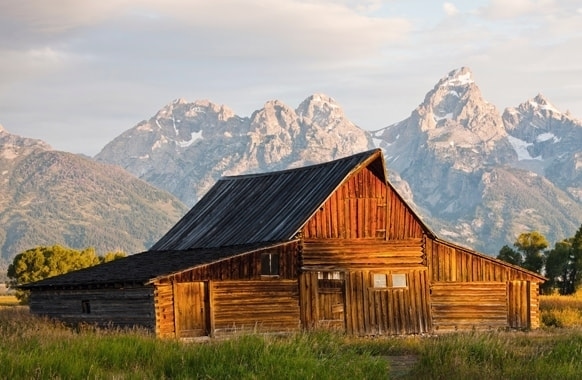
A barn is often defined as an agricultural storage building; however, these structures are not limited by such a simple description. Barns can be built in a variety of different styles and for an almost limitless number of purposes. One of the most interesting features of barns is the heritage and history behind their shapes and styles. They differ across the country and around the world.
Barn styles are generally named for their rooflines and often qualified by what they are designed to house. This could depend on the particular type of livestock or crop the barn is meant to shelter.
To educate you on one of the oldest and most practical framed structures, we are happy to provide a detailed list of some of the many barn types available to builders.
Bank Barns
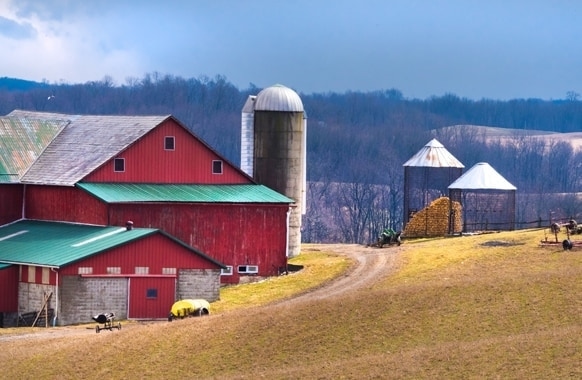
As the name suggests, built into the side of a bank in order for both the upper and lower floors to be accessible from ground level. Typically they will have one point of access at the top of the hill, and the second at the bottom. Banked barns are a practical storage solution as the banked design allows the top floor to be used for storage, and the bottom floor can be used as an access point for wagons. This feature makes loading and unloading much easier. Bank barns have a unique beauty and charm as they incorporate the landscape directly into their design.
Pole Barns
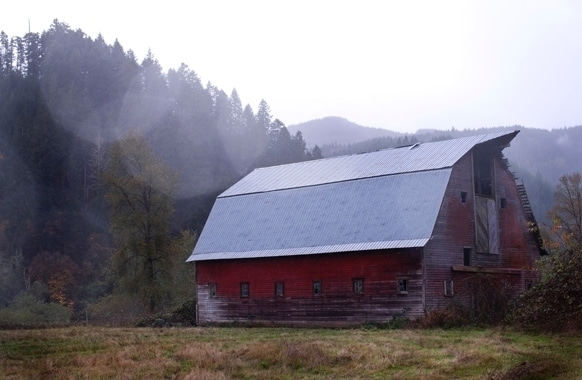
Pole barns take their name from the framing technique used during their construction. Deep-set posts serve as the main support for the barn, rather than a leveled concrete foundation. The absence of a strict foundation makes pole barns a flexible barn type as they can be built over unlevel ground, such as dirt or gravel. Not having to lay a foundation also greatly reduces the cost and effort required to build the structure. It is for this reason that the pole barn was born out of the Great Depression, where American farmers were forced to build less expensive barns than they had traditionally used. However, due to their versatility and relatively low-cost, pole barns are a common barn type to the present day.
Post and Beam Barns
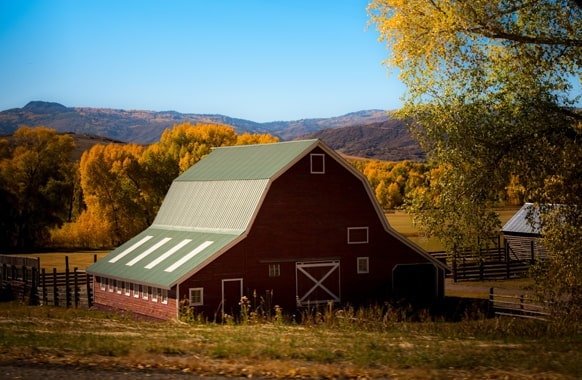
Post and beam barns is a type where the construction involves the use of heavy timbers, rather than traditional dimensional lumber. Heavy wooden timbers are joined together using carved joinery, or with steel plates. Although this type of barn is far more expensive to build than the above-mentioned pole barns, post and beam barns can be built with an exposed structural frame. This allows the barns to have more open space and their own rustic character. The shape of the barn can vary depending on the designer’s preference; however, all post and beam barns are identifiable by their heavy timber frames. The presence of exposed timber beams, lack of load-bearing walls, and a more open design give the post and beam barn type the look and feel of a beautifully built and remarkably durable structure.
Gable Barns
The iconic gable barn is one of the oldest types of barn design. The roof of a gable barn consists of a single slope on either side of the structure. Gable barns became and remain popular for a number of reasons. The steep pitch causes rainwater and snow to run off faster, which significantly reduces rot and leaks. The high A-frame roof also provides more valuable storage space than other barn types that are built with the same square footage of floor space. The steep pitch of the roof also means gable barns have exceptionally strong roofs. This is due to the reduction in the amount of gravitational stress the roof beams endure by being more vertically aligned. There is no wonder the gable barn has remained a popular design throughout the United States since the beginning of the 19th century.
Gambrel Barns
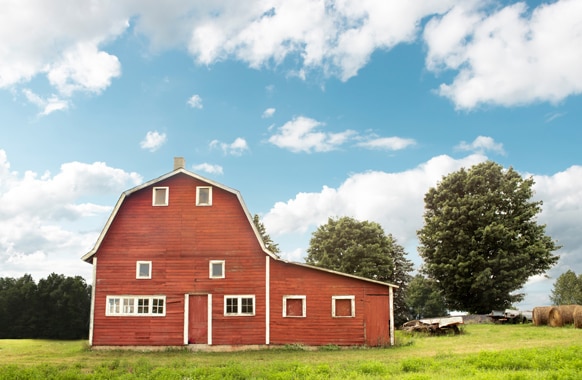
The gambrel barn is very similar to the gable barn in its design. The defining characteristic of the gambrel that sets it apart is the presence of a double slope on each side of the roof. The lower slope has a steeper pitch than the upper slope. The gambrel roofline offers greater storage capacity, which makes it a great choice for farmers who require loft space to store hay and equipment. This makes the gambrel a common choice for livestock farmers.
Monitor Barns
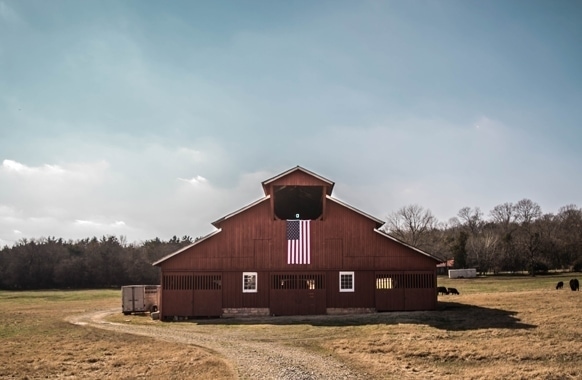
The monitor barn, or raised roof barn, is recognizable for its distinct roof style, where the center portion is elevated from the main portion of the roof support. This raised center portion is supported with additional walls. This gives monitor barns a unique shape that appeals to many; however, the design offers more than a distinct appearance. The hallmark raised center aisle provides headroom for a walkway or loft space. The ability to install windows along the walls that support the raised roof allows monitor barns to have more natural light and ventilation than more basic gable barn designs.
Round Barns
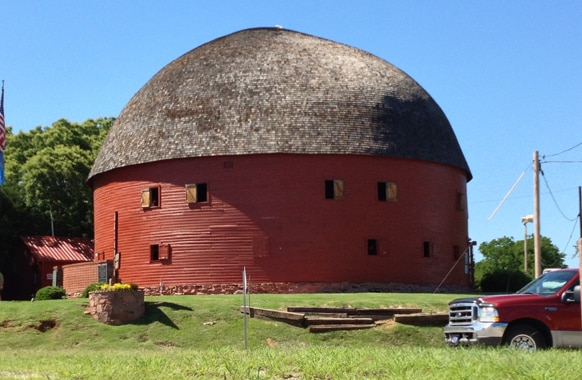
Round barns are easily recognizable by their unique shape. As the name suggests, round barns often have a circular floor plan, although they can be octagonal. Often they are used to stabilize dairy cattle, as their round design made it easier to feed livestock in the middle of the barn. Although round barns are rare today and are more of a historic barn type, their influence on modern barn design was important. The modern-day grain silo took much of its inspiration from the round shape of traditional round barns.
There are plenty of other types and styles of barns not listed above. One of the beautiful things about barns is their variety. There are so many ways a barn can be built and modified to accommodate any shelter need. Using the above list as a jumping-off point, we encourage you to research other barn types and find inspiration for your next project.
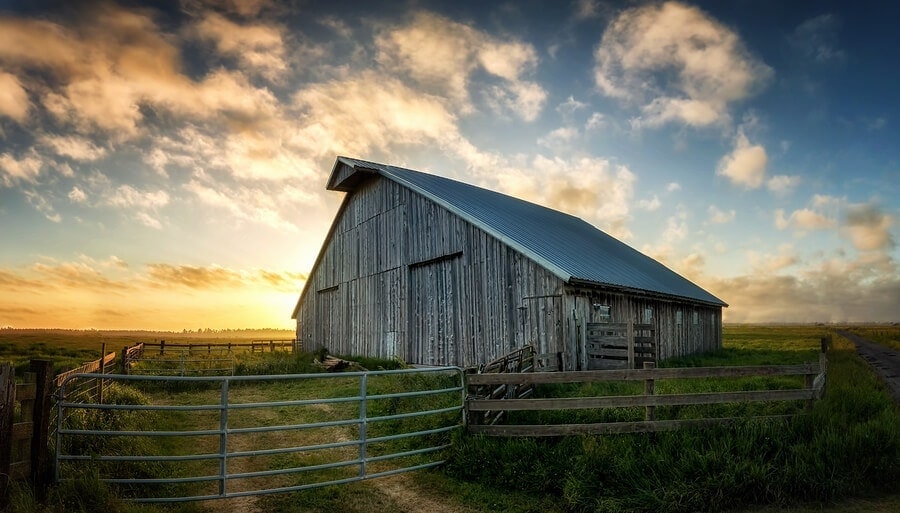
I thought it was interesting how you mentioned that pole barns can be built on uneven ground due to their unique foundation being the poles. My daughter is thinking about putting up a pole barn on her land to help with some storage of supplies and large equipment. I’ll be sure to mention this option to her and see if it’s a building she’d like to research more and that could work for her needs.
Good luck to her!